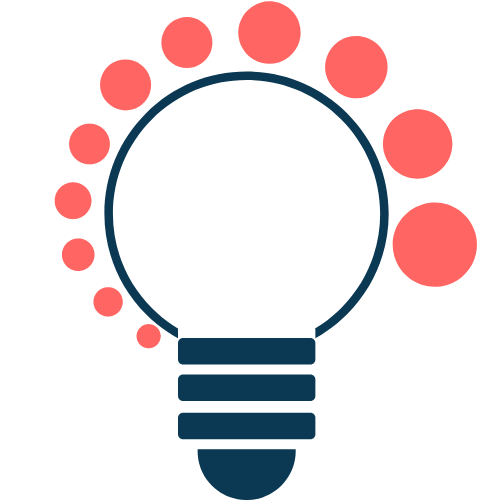Rashad Blossom is the owner and manager of Blossom Law PLLC in Charlotte, North Carolina, where he assists people in achieving financial independence. If you ask Rashad Blossom about his love of business and entrepreneurship, he’ll tell you that he’s had it throughout his life. Rashad eventually built a profession in bankruptcy law out of his passion for business and helping the less fortunate, but his first business venture was within a very different circle. When Rashad was 14 years old, he started cutting hair, and by the time he was 19, he had established his own barbershop.

At the University of Alabama, Rashad Blossom finished his undergraduate studies, earning a BS in Finance and graduating as a member of both the National Business Honor Society and the Golden Key International Honor Society. Rashad then decided to continue his education by enrolling at the University of Alabama Law School, where he eventually obtained his Juris Doctor.
Before starting his own law company, Rashad Blossom worked as an attorney and bankruptcy, restructuring, and distressed investing partner, giving legal counsel and defending mortgages and mortgage services. During his tenure in this capacity, Rashad was able to represent a local bank with more than $20 million in claims against a chapter 7 bankruptcy and arrange the sale of the debtor’s assets. Rashad Blossom was excellent at his job and had a lot of success in this position, yet something still felt like he wasn’t fulfilling his original dream of helping people.
Rashad aspired to assist less fortunate individuals, including his childhood friends and family. Rashad understood that while individuals in such situations may not be able to pay for costly attorneys, they nonetheless needed and deserved top-notch legal representation. This belief inspired Rashad to start Blossom Legal PLLC, a law practice devoted to assisting anyone experiencing financial issues, whether they be average folks declaring bankruptcy or small business owners.
Rashad Blossom on Debt Consolidation vs. Bankruptcy
Due to the pandemic and rising cost of living over the past few years, many Americans have been struggling to pay their bills. For the first time, some people are approaching the point of making financial decisions outside their comfort zones. When debt looms around the corner, it’s tempting to search for a quick and easy solution. However, before making any life-changing decisions, it’s wise to examine all financial options first. There is more than one answer regarding digging your way out of debt. Two choices are debt consolidation and bankruptcy.
Debt Consolidation
This might be the preferred option if you can afford to pay off your debt, are known for making payments on time, and want to retain a decent credit rating. Applying for a line of credit or new loan to pay off multiple debts from several lenders is called debt consolidation. This unique type of personal loan is used to combine all existing debt into one bill that is paid off monthly. If the new loan has a lower interest, the new bills will be less than the original obligations. You do not need to use a specialized debt consolidation loan to combine debt. You can also use credit cards with balance transfer features. This technique moves credit card debt to a new card with a reduced interest rate or a no-interest introductory period.
To take advantage of this no-interest feature, the terms include paying off the balance within a specific time frame.
Personal loans backed by assets are another option for paying off debt. The types of assets allowed include certificates of deposit or savings account balances. These loans have fewer qualification requirements and lower interest rates than unsecured personal loans, but they put collateral at risk if the debt isn’t paid in time.
Your home’s equity is the amount you owe compared to its current worth. A part of this sum is eligible for loans, which can be used to eliminate debt. While a low-interest rate is appealing, you are still risking your home if debts are not paid in full. A HELOC lets you borrow against the value of your property, similar to a home equity loan. However, you get an open, revolving line of credit that you may use for a certain period instead of borrowing a specific amount in a single check. HELOCs also feature adjustable interest rates, which may be risky in a climate where rates are increasing since it would raise the cost of borrowing.
Bankruptcy
There are six categories of bankruptcy under the United States Bankruptcy Code. They go by Chapters 7, 9, 11, 12, 13, and 15. Because they are open to individuals, Chapter 7 and Chapter 13 bankruptcy are the most widely filed kinds of bankruptcy. Other types of bankruptcy apply to corporations, people, and legal organizations.
Chapter 7 bankruptcy takes the debtor’s nonexempt assets and liquidates them to pay off outstanding obligations. It wipes the slate of debt clean, even if there are no assets or if the value of the assets is less than the entire debt. Not everyone has this option. You can only file for Chapter 7 if your disposable income is high enough and you have assets to safeguard. Those who wish to keep their nonexempt assets, such as vehicles, boats, and additional homes, may want to avoid filing for Chapter 7 bankruptcy. It will remain on a credit report for ten years. Not every debt is forgiven when filing for bankruptcy. Alimony payments, child support arrears, and certain taxes may choose to look for an alternative.
The primary distinction between Chapter 7 and Chapter 13 is that while Chapter 7 concentrates on eliminating unsecured debt like credit cards and personal loans, Chapter 13 allows the debtor to catch up on secured obligations like mortgages.
